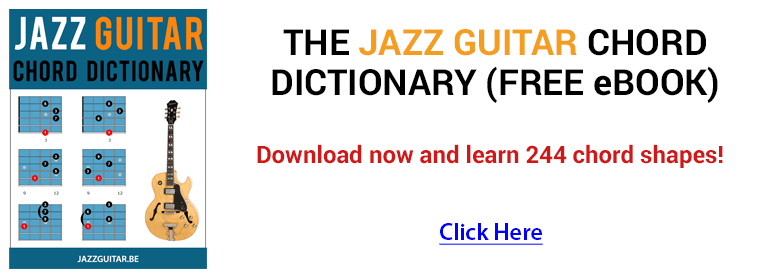-
It's the A or Ab thing over the 2 5, esp. if you go to the Cm6. Cheers
 Originally Posted by ragman1
Originally Posted by ragman1
-
08-07-2021 07:35 AM
-
There is Ab in the melody over both 2 and 5 in the last cadence. Playing A there (Dmin7, G9) is gonna be a pretty bold statement.
 Originally Posted by garybaldy
Originally Posted by garybaldy
-
Playing a major II-V instead of a minor II V (ii-7b5 - Vb9) is a reharmonization of the tune. It's not unheard of, but it's technically reharmonizing the tune by borrowing from the parallel major.
The problem in this case is you have in Ab in the melody. So that reharmonization will clash with the melody. If that's what you want to hear and the soloist is OK with it, then go for it. As long as you understand that you're reharmonizing the tune in an edgy way. The choice of the voicing you'll use for the Dmin7 will have a big effect too. Also whether you'll also put the 9th on the dominant (G9) which is also A.
-
Thanks.
 Originally Posted by Tal_175
Originally Posted by Tal_175
I think I went off on a bit of a tangent and was thinking of the minor 2 5 1 in general rather than specifically BB. Also the confusing thing for me is you can have a tune like BB with the note of Ab (consistently?) in the melody and it's still OK to end on a Cm6. Cheers
-
In general when soloing you have more liberty in your choices. You can play the major dominant over the Vb9. But when you're comping, you generally want to be more predictable.
-
Definitely yes. It sounds very nice.
 Originally Posted by garybaldy
Originally Posted by garybaldy
-
In my opinion, it is valuable to observe the harmonic content of a melody by itself.
This melody is drawn solely from two scale sources, C natural minor and Db major.
Beyond that, look for possible expressions of tonic to dominant/subdominant or the reverse within each phrase. There are certain notes most associated with each function, some that overlap and of course any note can also function as an extension. So what does the melody
tell you sans accompaniment? How does rhythm affect perception?
In music, whenever presented with a guideline or rule, it is fully safe to try doing the exact opposite thing (in the practice room at least). No one to my knowledge, has ever been seriously injured or died from short term exposure to comparative musical experimentation.Why don't you play it and see?
-
Absolutely, that's the point.
 Originally Posted by bako
Originally Posted by bako
-
I see, the inclusion of the natural A in the Cm6 implied to you it might be okay to play it elsewhere in the line. Well, as we said, it's not generally done (although it's not a complete no-no). But ending a minor ii-V-i with the m6 is very commonly done because it gives it a little lift.
 Originally Posted by garybaldy
Originally Posted by garybaldy
Rather like ending a major ii-V-I with a #11 which would clash horribly with the natural 11s in the ii and V chords.
-
Well, talk of the devil...
I was just looking at this vid on the other thread. Go to about 0.20 and you'll see in the score, end of the first line, an A7 going to a Dm7 on the next line. The A7 has a natural B in it. Glory be!
-
This made me wonder what I did when I recorded Blue Bossa, I thought I'd hit a few A's round there somewhere (I like that Cmin6 sound). It seems I played some A's when landing on the Cm chord, but not on the G7 before it. Have to say I never think about scales much, I just let my ears guide me really. After years of listening to jazz and getting ideas from the records, that seems to work.
Whenever I see a dominant chord in a chart, I decide from the context which extensions sound right to me, which may not necessarily be what the chart says!
Anyway re. Blue Bossa, I had a listen and found examples in my solo where I played those A notes at 1:27, 3:27 and 4:04.
-
I'm sure I've seen JP use Dm7 G13 Cm7 in TWNBAY!
 Originally Posted by ragman1
Originally Posted by ragman1
-
I believe :-)
Which means, of course, that it's fine so long as it sounds okay. As usual
Go to 1.31 and see Dm7 - G7 - Cm7 in all it's glory.
BUT it's deceptive because Cm here isn't the i chord, it's the iii of the AbM7 later ... so using Dm7 - G7 before that sequence is just part of the tune.
We should never have got into this really...
-
That's where!
 Originally Posted by ragman1
Originally Posted by ragman1
-
PS. Don't overlook grahambop's vid. He's really very good at that stuff.
-
thankyou for the plug ragman!
-
If you review your entire repertoire looking for a situation where a specific note is going to be absolutely wrong -- meaning you're finding the most extreme error you can possibly find, the absolute worst note choice you can imagine, sooner or later somebody will post a terrific solo by a great player that plays that exact wrong note.
We had a thread a while back which I think was Wes sounding great playing F# against G7.
So, which alteration do you play in which ii V or iim7b5 7b13 or whatever -- I think you have to try it every which way in the shed, learn the sounds and then make melody on the bandstand.
Is it ever too soon to have a thought about your individual sound, as opposed to being able to play a kind of classic sound?
-
Thank you to everyone who responded to my question. I am not sure I phrased my question as well as I could have to be honest. But I have never been that great with words. Anyway , if nothing else I seemed to spark an interesting debate with lots of differing opinions which is what it's all about. I suppose the main point to come out of this is the best aproach is always going to be to try everything and see what sounds best to our ears. So thank you once again.
-
Remember too that not just the scales but the chords themselves are up for grabs. In my own arrangement, I decided to add a Bb9 in bar 4 (common enough) and a Gb13 in bar 12 to extend the cycle (works great with the melody and gives the tune more of the blues tinge suggested by its title):
Last edited by PMB; 08-08-2021 at 02:05 AM.
-
I’d say this is pretty common as a sound generally.
 Originally Posted by Tal_175
Originally Posted by Tal_175
Favourite example: bar 2 of Blues for Alice; clear A mixolydian/dominant tonality. There’s a moment in Donna Lee too.
in terms of swapping major for minor dominant; Wes’s version of Caravan is an extreme example. Wes really does express a Gm7 C7 tonality on that one which obviously has nothing to do with the melody.
Charlie Christian was also a fan, major dominant in the minor key. Does sound angular! Take a listen to Found a New Baby.
So; conserving the quality of dominants in solos?
Honestly, a lot of modern chord scale guys spend time on this; oh the melody here is a b13 therefore I should play b13 in the solo; this seems a different conception from Barry Harris where anything beyond the shell voicing is really up to you.
Depends who’s comping as well, if anyone.
-
I agree major II V replacing minor ii V is not uncommon (as also I said in my post). I was referring to this specific case where there is an Ab in the melody (exactly where Dmin7b5 is played) and Dmin7 is replaced with Dmin7b5. Even then I said go ahead and see if you like it. (I guess I'm not a chord scale guy
 ).
).
In terms of soloing, mixing and matching dominants are very common (minor dominant on major or major dominant on minor). In fact BH would say over Dmin7b5 G7 play Bb7 into B, then continue with a G7 idea (among other things like Db7 or E7).
-
Thank you for that. Lovely playing, I was grooving away to that.




 Reply With Quote
Reply With Quote



Blues clip from Saturday
Yesterday, 11:54 PM in From The Bandstand